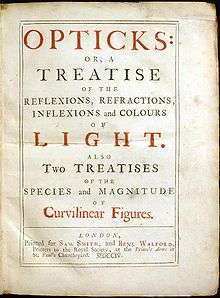Treatise
A treatise is a formal and systematic written discourse on some subject, generally longer and treating it in greater depth than an essay, and more concerned with investigating or exposing the principles of the subject.

Origin
The origin of the genre traces its roots to written instructions. The first written instructions that were worthy of preserving would be wisdom literature. Earliest examples come from Ancient Egypt such as The Maxims of Ptahhotep (~2300 BC), the Instructions of Kagemni (~1900 BC), Loyalist Teaching (~1800 BC) and the Instructions of Amenemhat (~1500 BC). When written instructions captured abstract topics like politics, which could only be reliably preserved through documentation, the treatise was born.
The origin of the treatise label occurs around the time that the manuscript culture shifted from monasteries to the market in the cities, which was in the 13th century. Some of the most common genres of manuscripts of the time were bibles and religious commentaries as well as philosophy, law and government texts. The manuscripts that had a systematic discourse were labeled as a trestis, which later became treatise during the late Middle English period. Due to the meaning of treatise being deeper than the definition itself, some works that were particularly significant (or promoted to be significant) in its genre were given the treatise label, inappropriately. For example, when comparing the Vivekacūḍāmaṇi and the Tao Te Ching, both philosophical works, the treatise distinction becomes clear. The Vivekacūḍāmaṇi has a clear systematic discourse with a beginning, middle and end while the Tao Te Ching is fluidly organized.
Clarification and further classification
As the meaning of the word treatise is more inferential than the definition alone, the meaning needs further clarification.
By definition, the key features of a treatise are as follows:
- Written: To expose itself for examination.
- Formal: To make the work open for objective examination by others.
- Systematic: It is well organized to make it easy to examine by others.
- Comprehensive: It aims to be complete in scope.
In addition to the features above, to qualify as a treatise, the work has to be revolutionary and create a sustained momentum. The revolutionary feature is important as it positions the work as being notable. The sustained momentum feature is important as without it, the work is unsuccessful in exposing the principles of the subject.
Treatises typically don't follow the long tail distribution of popularity like many other written works. They tend to follow the diffusion of innovations theory though on long time scales. This distribution of popularity with time also applies to wisdom literature and possibly other written genres.
Notable treatises
Treatises with historical influence
The works presented here have been identified as influential by scholars on the development of human civilization.
| Title | Author | Year | Subject | Influence Reference |
|---|---|---|---|---|
| The Art of War | Sun Tzu | ~500BC | War | Reference |
| Euclid's Elements | Euclid | ~300BC | Geometry | Reference |
| Arthashastra | Kautilya | ~200BC | Statecraft | Reference [1][2][3][3] |
| De architectura | Vitruvius | ~30BC | Architecture | Reference |
| Almagest | Claudius Ptolemaeus | 200s | Astronomy | Reference |
| Vivekacūḍāmaṇi | Adi Shankara | 700s | Philosophy | Reference |
| De re aedificatoria | Leon Battista Alberti | 1485 | Architecture | Reference |
| The Prince | Niccolò Machiavelli | 1532 | Politics | Reference |
| De revolutionibus orbium coelestium | Nicolaus Copernicus | 1543 | Astronomy | Reference |
| Discourse on the Method | René Descartes | 1637 | Philosophy | Reference |
| Two Treatises of Government | John Locke | 1660 | Government | Reference |
| Opticks | Isaac Newton | 1704 | Physics | Reference |
| The Wealth of Nations | Adam Smith | 1776 | Economics | Reference |
| On the Origin of Species | Charles Darwin | 1856 | Biology | Reference |
See also
| Look up treatise in Wiktionary, the free dictionary. |
- Compilation thesis
- Edited volume
- Legal treatise
- Monograph
- Tractate
- Tractatus
References
- Roger Boesche (2003), Kautilya's Arthaśāstra on War and Diplomacy in Ancient India, The Journal of Military History, Volume 67, Number 1, pages 9-37
- Henry Albinski (1958), Place of the Emperor Asoka in Ancient Indian Political Thought, Midwest Journal of Political Science, Vol. 2, No. 1, pages 62-75
- Henry Albinski (1958), Place of the Emperor Asoka in Ancient Indian Political Thought, Midwest Journal of Political Science, Vol. 2, No. 1, pages 62-75